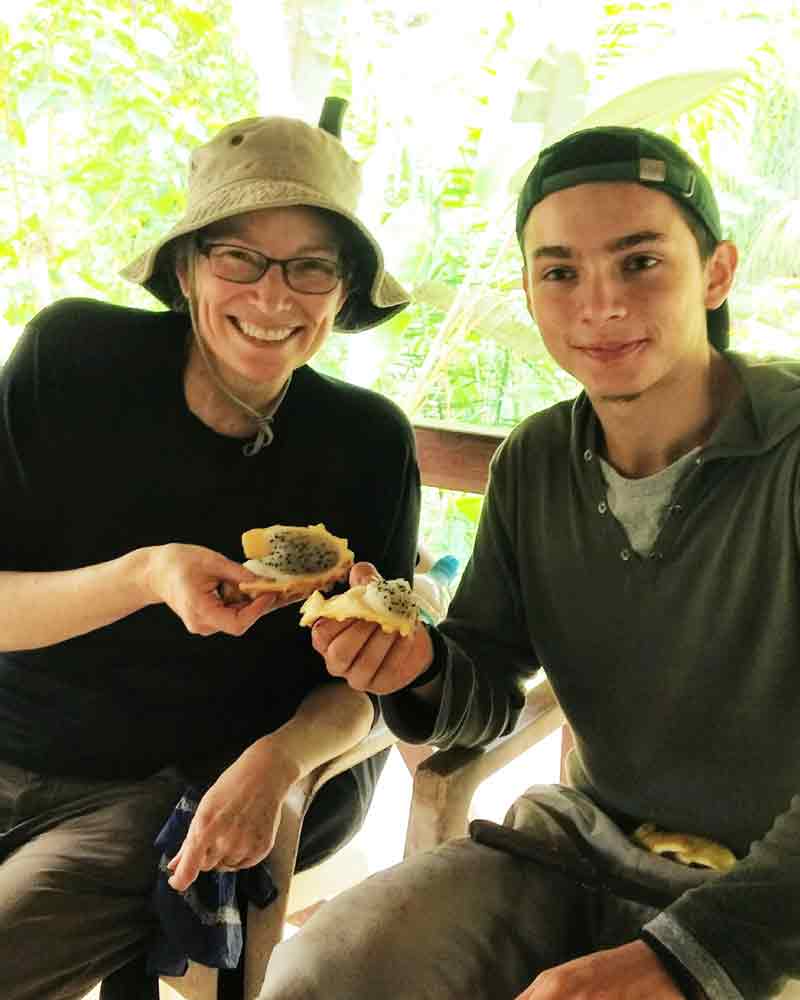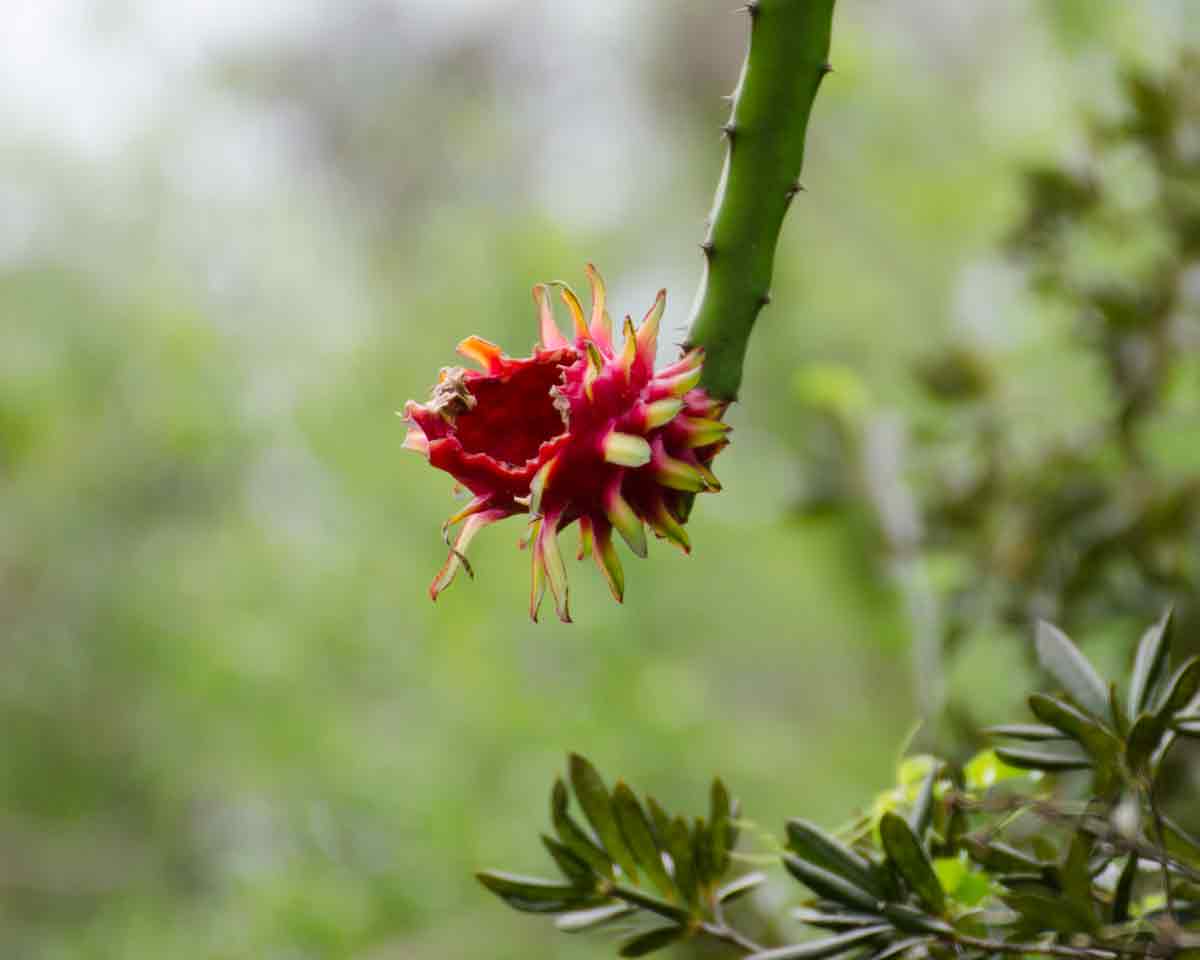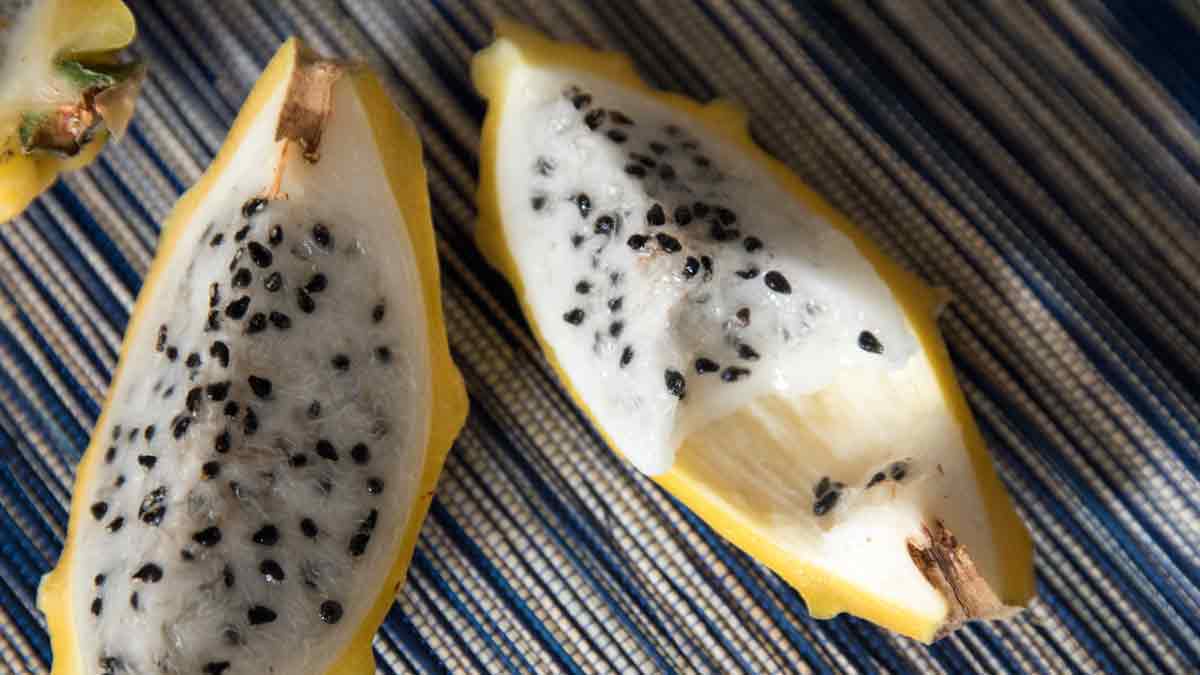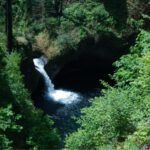My very first breakfast in Ecuador included the strangest-looking fruit I had never seen, a pitahaya. Its bright yellow, leathery skin protects a juicy, white interior flecked with hundreds of small, flat, black seeds. Its flavor is absolutely delicious, with the sweetness of the ripest melon and a similar texture to a soft, juicy pear.
Pitahaya: The Name
The name pitahaya (pee-ta-hi-ya) comes from the indigenous Taíno of the Caribbean. Therefore, the “h” is pronounced even in Spanish-speaking Ecuador where h’s are generally silent. Pitahaya literally means scaly, a perfect description of this exotic fruit’s petal-shaped, scaled exterior.
Additionally, pitahaya is confused with the similar sounding name of pitaya, another cactus fruit that comes from Mexico and Central America. They are not the same fruit though they both grow on cactus plants.
In the United States, the pitahaya came to our shores via Asia. Therefore, it’s known by it’s Chinese name dragon fruit, or huǒlóng guǒ (火龍果). Its scaly exterior is reminiscent of a dragon’s scales.
Pitahaya: Facts
Pitahaya comes in three varieties. The most common variety in Ecuador is the yellow-skinned, white-fleshed fruit (Selenicereus megalanthus). The second most common is the pink-skinned, white-fleshed fruit (Hylocereus undatus). It is less sweet than its yellow cousin. The third variety I have only seen in the wilds of Ecuador, a pink-skinned, pink-fleshed beauty with a supposedly tart fruit (Hylocereus costaricensis).
The flower of the pitahaya blooms only for a single evening. The fragrance of this white, short-lived flower is powerful, attracting dozens of night-flying insects to assist in pollination.
The pitahaya is rich in iron, calcium, and phosphorous and is a source of Vitamins B, C, & E. Like watermelon, the fruit is mainly water, a grand 90%.
Nowadays, the pitahaya is cultivated on farms across the world, from Taiwan to Ecuador, Australia to Cyprus. But I have to admit to getting excited when I see an Ecuadorian mark on the bright yellow fruit. I know a taste of it will remind me of sharing this delicious treat with our local guide after hiking out to the petrogylphs on the Rio Chirapi in Pacto. When Nacho offered me a juicy slice, it did much more to quench my thirst than a slug of water from my metal bottle.
Where to Find Pitahaya
For the most part, pitahaya is available in many American supermarkets where it is called dragon fruit. Often, they sell the pink-skinned variety but just yesterday, I found piles of beautiful golden yellow dragon fruit at the Whole Foods on P Street in Washington DC. It was like hitting the jackpot!
By and large, for an almost guaranteed purchase your best bet is to head to your local Asian market rather than a chain supermarket.
In Ecuador, pitahaya is sold in supermarkets and corner fruit stands. It can be expensive outside of its normal growing season.
Pitahaya also grows in the wilds of Ecuador. I once watched colorful birds fight over the fleshy centers of the fruit from an amazingly tall cactus plant in the endangered dry forests of Chirije Lodge.
How to Eat a Pitahaya
However, few people are going to pick a dragonfruit in the wild. Best to leave them for the birds!
Fortunately, they are easy enough to find in many corner stores. Better yet, they make a great snack food. They come well protected in their leathery skin and don’t bruise as readily as bananas.
All you need to eat the fruit is a small pocket knife and a napkin to wipe your fingers and mouth. Merely slice the fruit lengthwise in quarters and peel the skin away from the flesh, eating as you separate the two. Or slice into small chunks and add to your fruit salad.
Ecuadorians will warn you to eat with care. In short, eating too many pitahaya in one sitting is like eating too many prunes. A good thing if in need of a laxative but take caution if you are already struggling with stomach issues do to altitude adjustment.
We would love to know how you were introduced to dragon fruit – share your story or a photo with us on our Facebook page, on Twitter, or on Instagram.



















0 Comments